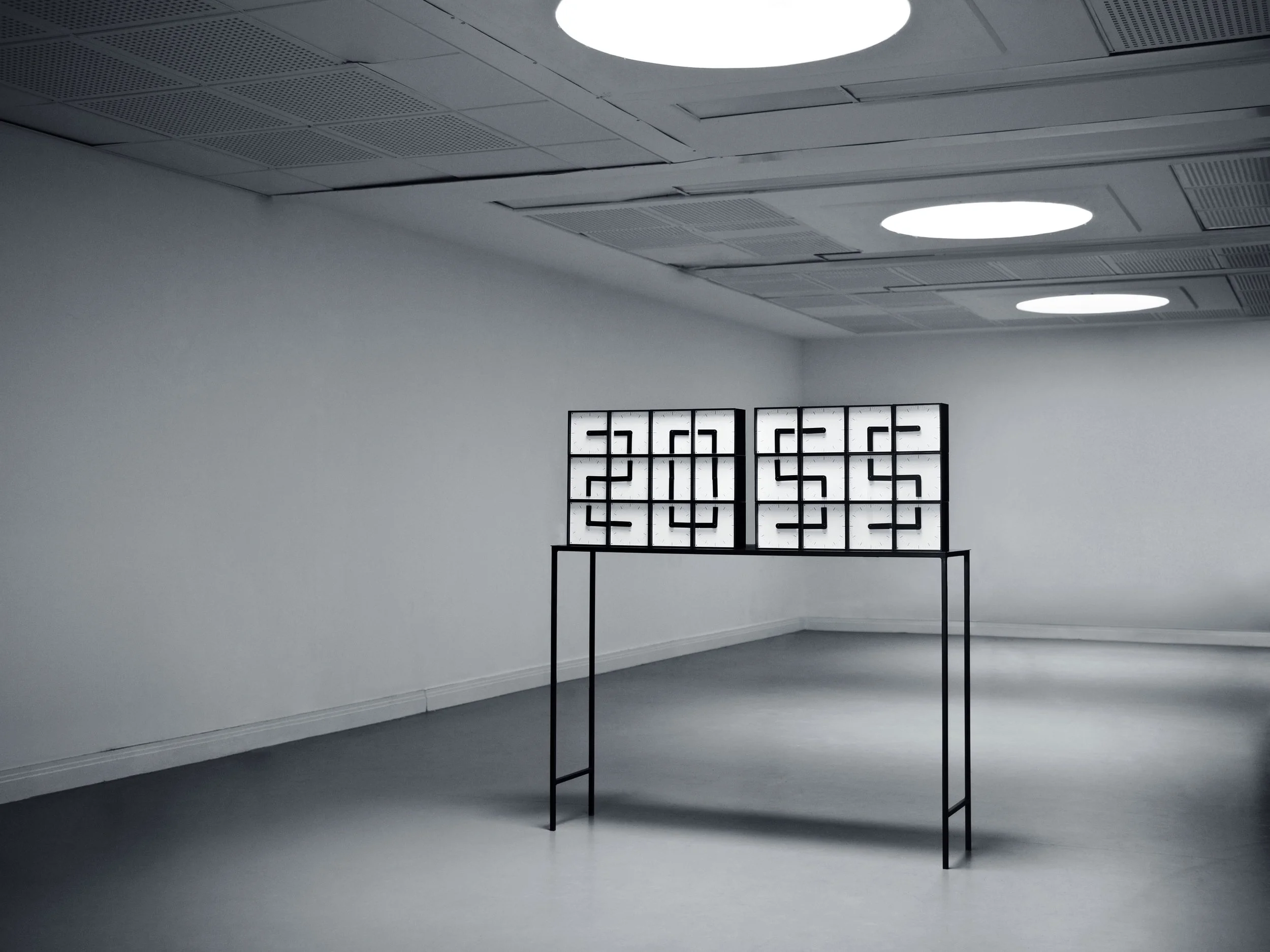The Clock Clock Project

The Clock Clock project started in 2008 and was one of the first collaborative venture by Humans since 1982. It was the catalyst for their ongoing exploration of the concept of time through kinetic sculptural works and the stepping stone for their A million Times project.


The project subverts clocks to represent them as art objects, unleashed from a solely pragmatic existence. The hands of multiple analogue clocks are programmed to spin individually and in formation to perform an abstract choreography. Once every minute, the clock hands align to accurately display the time in a digital typography, playfully reporting and representing the concept of time passing.
The first limited edition emerging from this project was The Clock Clock. It was exhibited at Saatchi Gallery London in 2010 and was soon acquired by prominent art collectors and museums like the International Museum of Horology in La Chaux-de-Fonds in Switzerland.
-
The concept has developed in ambition, complexity and scale over the past decade into the ongoing series A million Times. This includes a series of available editions as well as major public commissions such as A million Times at Changi, a 504 clock face artwork that is one of the largest kinetic sculptures in the world.
“We experimented with animated typography and developed a font that was based on a grid of clocks, whereby we made the clock-hands stop in certain positions in order to create letters and digits. Once the clock hands rotated again the characters would fall apart. Using clocks to show this circle of formation and decline was intriguing and after some experimentation it proved to be beautiful too. Even though the movement of each clock hand is very restricted and simple – as it can just rotate around the ever-same centre – when programmed to move simultaneously with the other clock-hands, referring to each other in time and space, it created something with emergent properties: the whole was more than just the sum of its parts.”
– Humans since 1982






